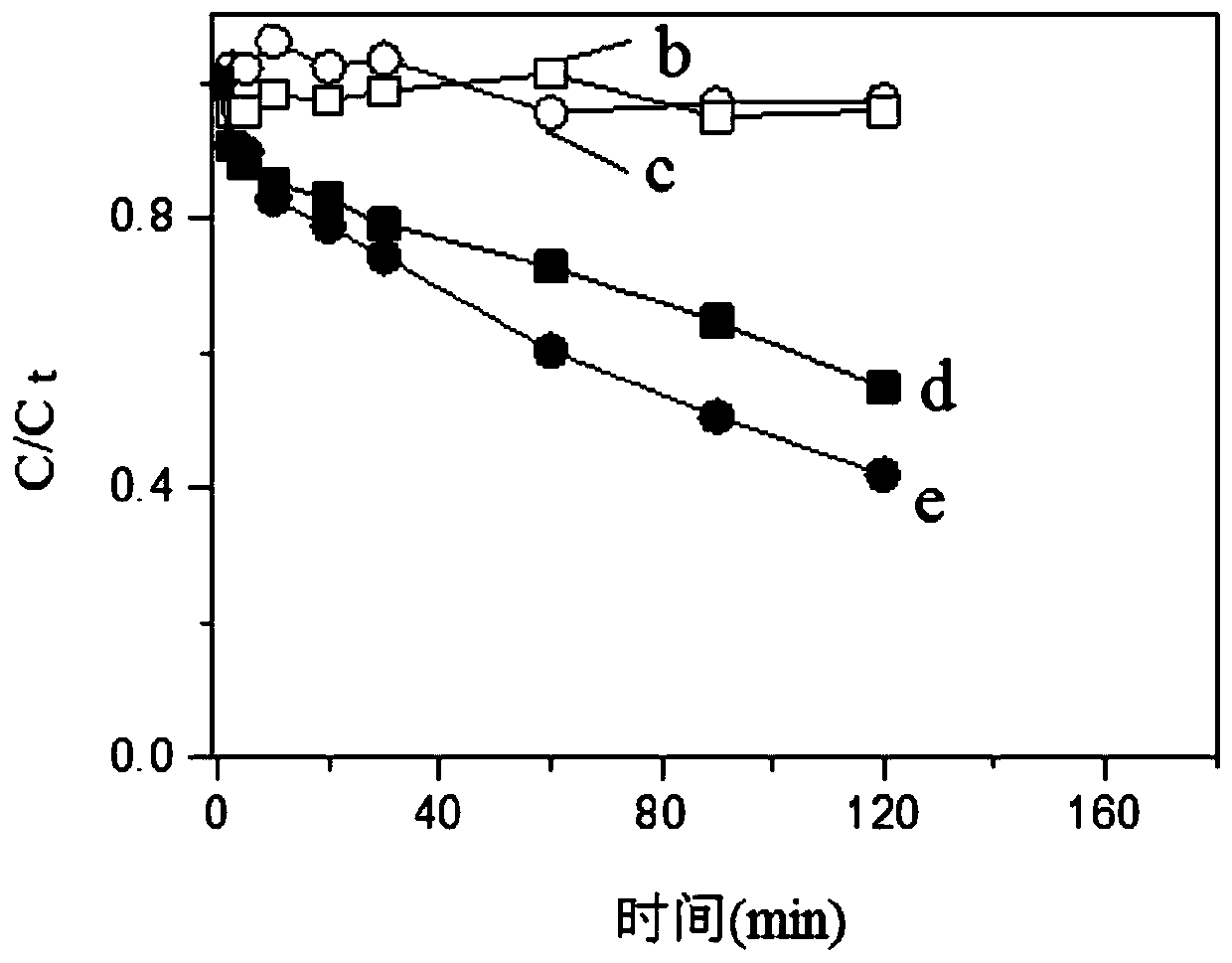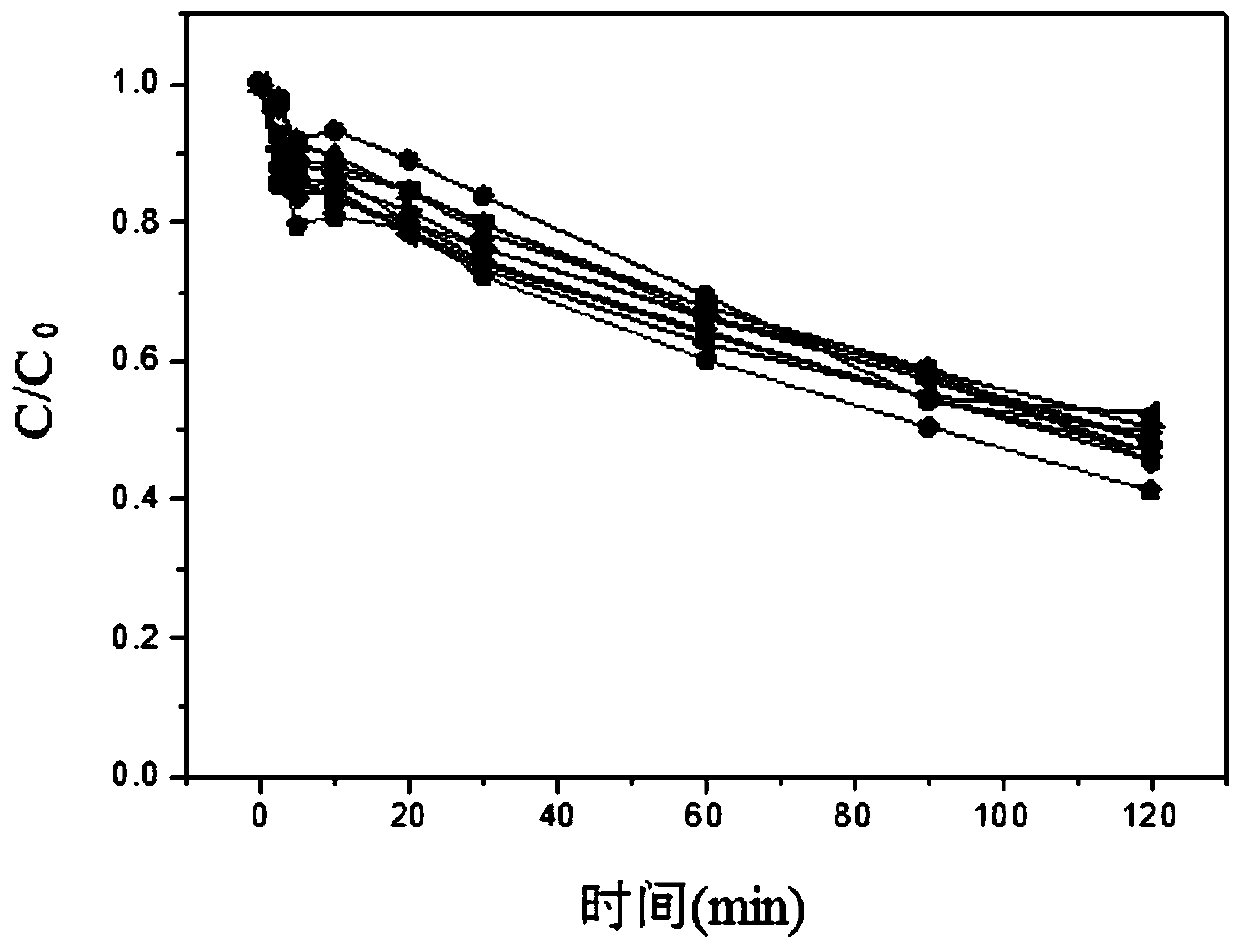Method for direct oxidative degradation of aniline organic pollutants in water
A technology for organic pollutants and oxidative degradation, which is applied in the field of oxidative degradation of aniline organic pollutants, can solve the problems of high selectivity of pollutants by biological methods, limited pollutant removal effect, and large influence of environmental factors, and achieves the oxidation of pollutants. The effect of high removal efficiency, convenient management and simple operation
- Summary
- Abstract
- Description
- Claims
- Application Information
AI Technical Summary
Problems solved by technology
Method used
Image
Examples
specific Embodiment approach 1
[0021] Specific embodiment one: a kind of method of direct oxidative degradation of aniline organic pollutants in water in this embodiment is completed according to the following steps:
[0022] First measure the pH value of the wastewater to be treated containing aniline organic pollutants and the molar concentration of aniline organic pollutants in the wastewater to be treated. If the pH is less than 5, the pH value needs to be adjusted to 5~10. If the pH is 5~ 10, there is no need to adjust the pH value; then add persulfate powder to the wastewater containing aniline organic pollutants to be treated, stir and react for 1.5h to 3h at a temperature of 20°C to 30°C, and complete the direct oxidation degradation Aniline organic pollutants in water; the molar equivalent ratio of the persulfate powder to aniline organic pollutants in the water to be treated is 50:3.
[0023] After fully stirring and mixing, the oxidation pretreatment of aniline organic pollutants in the wastewate...
specific Embodiment approach 2
[0028] Specific embodiment 2: The difference between this embodiment and specific embodiment 1 is that the wastewater to be treated containing aniline organic pollutants contains aniline, p-chloroaniline, p-bromoaniline, benzidine, o-toluidine, p- One or more of nitroaniline, o-chloroaniline and m-chloroaniline.
[0029] The aniline organic pollutants have aniline and similar structures, such as an amino group linked to a benzene ring.
[0030] Other steps are the same as in the first embodiment.
specific Embodiment approach 3
[0031] Embodiment 3: The difference between this embodiment and Embodiment 1 or 2 is that the concentration of p-chloroaniline in the wastewater containing aniline organic pollutants to be treated is 0.3 mmol / L.
[0032] Other steps are the same as those in Embodiment 1 or 2.
PUM
 Login to View More
Login to View More Abstract
Description
Claims
Application Information
 Login to View More
Login to View More - R&D Engineer
- R&D Manager
- IP Professional
- Industry Leading Data Capabilities
- Powerful AI technology
- Patent DNA Extraction
Browse by: Latest US Patents, China's latest patents, Technical Efficacy Thesaurus, Application Domain, Technology Topic, Popular Technical Reports.
© 2024 PatSnap. All rights reserved.Legal|Privacy policy|Modern Slavery Act Transparency Statement|Sitemap|About US| Contact US: help@patsnap.com










